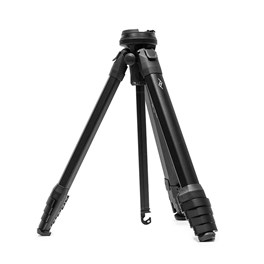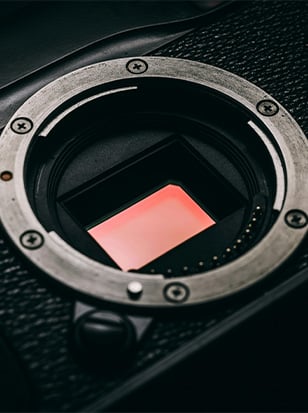
A tripod is one of the most valuable, life-altering accessories a photographer can buy. A good tripod opens up opportunities and shooting possibilities in all sorts of different directions, allowing you to experiment with new techniques such as panning and long exposures, as well as improving your options in low light.
So which tripod to choose for your camera? You can spend a significant sum on a professional-grade tripod – but you don’t have to. There are loads of amazing tripods available from reputable manufacturers at fantastic prices, and we’ve compiled the best ones here.
Let’s take a look at some of the best affordable tripods available right now…
Best Tripods
|
Maximum Height: 143 cm Minimum Height: 35 cm Folded Length: 32 cm Weight: 1.05 kg Maximum Load Capacity: 4 kg |
Pros:
Cons:
|
Manfrotto is, of course, one of the biggest names in the business when it comes to tripods. We could have filled a list like this with Manfrotto tripods alone — however, we’ve restrained ourselves and are highlighting just a couple. First up is the brilliant Element Traveller Carbon Small, a tripod that’s diminutive in terms of both its physical size and its price tag.
Measuring just 32cm when packed down, this tripod can nevertheless support up to 4kg of kit, which is realistically going to be plenty for most photography setups. Constructed from lightweight but durable carbon fibre, the Element Traveller comes with an aluminium ball head, enabling smooth camera movement and allowing for precise positioning. It’s also compatible with Arca-style quick-release plates, which means the camera can easily be detached and reattached, or swapped to other supports if necessary. The legs can also be independently positioned as needed.
|
Maximum Height: 152.4 cm Minimum Height: 14 cm Folded Length: 39.4 cm Weight: 1.56 kg Maximum Load Capacity: 9.1 kg |
Pros:
Cons:
|
Peak Design is a company known for innovating, and the team wasn’t content with just bringing out another travel tripod. The Peak Design Travel Tripod is a breed apart, so efficiently designed that it folds down with zero dead space until it’s roughly the size of a water bottle. In terms of sheer portability, you can hardly ask for better. What’s more, Peak has also simplified the way the tripod operates, with a single adjustment ring for camera movement that is easy and intuitive to use.
The makers claim the tripod can deploy in as little as 9.8 seconds — though that might take you a little practice. There is also a carbon fibre version; we’ve picked aluminium here as its reduced price makes it one of the best tripods on the market right now in terms of value for money. An ergonomic ball head is included, giving you everything you need to get shooting.
|
Maximum Height: 194 cm Minimum Height: 14.6 cm Folded Length: 61.2 cm Weight: 1.73 kg Maximum Load Capacity: 40 kg |
Pros:
Cons:
|
If you want sheer solidity and stability, the 3 Legged Thing Pro 2.0 Winston Carbon Fibre Tripod is the one to pick. Its super-strong design enables it to carry payloads many times its own weight, with a maximum capacity of 40kg (far, far more than you’re ever going to need). Constructed from durable and lightweight carbon fibre, Winston is a premium tripod designed to suit professionals and committed enthusiasts.
With the ability to convert to a monopod with a maximum height of 1.93m, Winston is super-versatile. It’s definitely on the larger and heavier side for a tripod, but it packs down well enough to a minimum length of 61.2mm, which is reasonably transportable. The total weight of the kit is 2.05kg with the head. Plus, all three legs are completely removable, so should the need arise, you can easily convert Winston into a tabletop tripod!
|
Maximum Height: 162 cm Minimum Height: 15 cm Folded Length: 54 cm Weight: 1.86 kg Maximum Load Capacity: 25 kg |
Pros:
Cons:
|
Gitzo is known for its premium, high-end tripods, and accordingly, the Gitzo GT3542 Mountaineer Series 3 Carbon eXact Tripod is not one we’d recommend to beginners, or those on a budget. However, if you can afford its asking price, you’ll find this to be an absolutely superb tripod for all purposes. Premium materials meet sublime engineering, delivering a camera support that can support up to 25kg of kit.
The legs are Carbon eXact tubes with four sections. The tripod can reach a maximum height of 162cm, and for low shots can go all the way down to 15cm off the ground. Its closed length is just 54cm, which is handy for travel. What this camera really delivers though is stability. If you’re shooting on an ultra-high resolution sensor, where every pixel counts, you need the ultimate in camera stability, and that’s exactly what you get here.
|
Maximum Height: 177 cm Minimum Height: 35.5 cm Folded Length: 58.9 cm Weight: 2.05 kg Maximum Load Capacity: 16 kg |
Pros:
Cons:
|
Benro’s tripod is great for photographers who do a bit of everything. It’s a highly versatile option, with a tall maximum height of 177cm, but also the capacity to drop your camera right down to the ground for close-up macro shooting. The legs are wrapped in nine layers of carbon fibre, giving them a great deal of strength without significantly adding to the weight.
There’s also the option to add the included spiked feet, giving you more stability on soft ground. The three-section legs lock securely with rubber twist locks, and if you do want to shoot at ground-level, it’s a simple matter of reversing the central column. This is one of the heavier tripods on our list, breaking the 2kg mark, so bear that in mind if you’re planning to do a lot of travel.
|
Maximum Height: 183 cm Minimum Height: 26.7 cm Folded Length: 74.4 cm Weight: 2.2 kg Maximum Load Capacity: 25 kg |
Pros:
Cons:
|
Already equipped with a multi-angle ball head, the Vanguard VEO 3+ 303CBS is a well-kitted-out tripod suited to professionals and enthusiasts alike. Using the VEO MA1 adapter, you can convert the central column into a multi-mounting arm for extra accessories, which can be especially useful for giving your shot a quick burst of light via an LED panel.
Though it supports up to 25kg of kit, the Vanguard VEO 3+ 303CBS’s standout feature is its multi-angle central column, which allows you to get truly precise with your camera positioning. Once you’ve got it where you want it, the column can also be locked in place for maximum stability, and there’s also a retractable hook if you need to add a little extra weight for counterbalance.
|
Maximum Height: 165 cm Minimum Height: 30.5 cm Folded Length: 60 cm Weight: 1.6 kg Maximum Load Capacity: 10 kg |
Pros:
Cons:
|
Returning to Manfrotto, the MT290XTC3 Carbon Fibre Tripod is a superb example of a mid-range support. Despite being made from carbon fibre, it’s well priced, coming in a good deal under many comparable rival tripods. It offers a good 10kg of camera support, and can reach a maximum height of 165cm.
The legs on the MT290XTC3 can be set at four angles, giving you much more flexibility when operating on uneven surfaces. The aluminium leg locks are impressively solid, and in a nice touch, the tripod comes with its own shoulder bag for easy transportation. It’s not the most portable tripod on our list, measuring a good 60cm even when folded down; however, the Manfrotto MT290XTC3 Carbon Fibre Tripod is an impressive piece of kit to suit all kinds of photographers.

Alternatives
Having a solid support for your photography is essential in many situations, to ensure sharp images and maximise your ability to be creative. Usually we photographers rely on our tripods, our trusty three legged friends that keep our cameras solidly supported.
Sometimes, however, they’re not the perfect solution for the given situation. Below are six other options you might want to think about to help support your photographic ambitions.
Monopod / video monopod
Sometimes one leg is better than three. As a support, monopods are fantastic for fast paced action or sports. Often you will see Olympic photographers using a monopod, as it will help take the weight of their long lens while still giving them the ability to move freely, follow the action and take up minimal space. In most cases, monopods work best with lenses that have their own foot mount for better weight distribution and handling.
One down side is the fact that a monopod isn’t free-standing, meaning you always have to keep a hand or two on it, but in most cases this won’t be a problem.
If you shoot video, don’t overlook the monopod. Video monopods with a ball-jointed foot provide the ability to level the camera and smoothly pan and even slide from side to side, helping to add camera movement for the more professional look.
Superclamp
Recommended by our wildlife ambassador Tom Mason, superclamps provide flexibility and strength as a support, at a low price. There really isn’t a reason not to own one.
A simple clamping device, the superclamp allows you to grip onto pretty much anything, providing a secure way to attach a camera.
With a payload of 15kg, they can hold a large amount of weight. The mounting spigots allow for the addition of a tripod head, meaning they are a great for putting a camera in awkward positions, be it on railings at sporting events, on the limb of a tree or attached to a steel joist in an old warehouse!
Magic arm
If the super clamp doesn’t provide enough variation for camera positing, combining it with a magic arm is a great way to have a totally flexible and positionable support. Working alongside the clamp they add an extra two feet or so of flexible movable arm that locks tight once you have it in position. This makes it possible to mount a camera practically anywhere and once you have one, you’ll wonder why you didn’t sooner. For outdoor photographers, a magic arm can be, well, magic for positioning cameras in trees for remote work, or for mounting additional accessories off a tripod.
The magic arm combination is also a great solution for those who are working from a wheelchair or other movement aid. They can be attached to the metal of the side and provide a solid, positionable support for those who may find carrying a tripod difficult.
Suction cup
In some situations you may need to attach your camera to a pane of glass, sheet metal or the side of a car, and for these jobs a suction cup is what you need!
Strong suction cups are readily available these days, especially following the emergence and success of GoPro and action cameras. If motorsport photography is your bag, having a POV cam on the side of a rally or track car is an awesome way to get some new angles, and a suction cup is a great way to do it. Additionally if you like your road trip photos, suction cups can be a great way of mounting a camera for an on board time-lapse to help share those long journeys with your friends and family.
Ground pod
Getting eye level with your subjects is really important if you want to add impact to your images. If you work with wildlife, plants or macro subjects, you’ll often find they will be low down on the ground.
With some tripods working at low levels they can be a viable option, but due to their cumbersome size and difficulty to move, a ground pod can be a better alternative. Coming in a range of designs ground pods are basically low level supports with a thread for a tripod head. Some are shaped like a round pan, which allows the user to slide them around on the ground, perfect for edging towards subjects when following wildlife.
These when used alongside a gimbal or other fast panning head are great for wildlife photography. Other styles like the Kirk ground pod are square, with small feet that provide more rigidity. These used together with a solid ball head provide a cracking support for the macro photographer, giving a low-angle support with plenty of scope for framing up in a variety of compositions. Small and compact, a ground pod may be just what you have been looking for!
Bean bag
If the above supports haven’t ticked all the boxes, maybe a heavy dead weight to carry might be what you are after. Bean bags can be a perfect camera support, especially for use with long lenses. Excellent to use from cars, fences or wooden hides they provide a solid way of keeping the camera steady and your images sharp.
What you fill your bean bag with is of course important. If it’s too light (some people use polystyrene – a material I hate) you will find the bag almost bounces with an amount of elasticity, resulting in increased vibrations. Instead, you’ll want something heavy that moulds to the camera. Rice, lentils or birdseed are great choices, but of course, remember a big bean bag full of these starts to get weighty! Another choice is small plastic beads, which are solid and won’t bounce. They’re waterproof too, meaning they won’t get mouldy, and they have the additional benefit of being a shade lighter too.
If you are travelling and want to take a bean bag, take it unfilled and once on location head out and buy some local rice or beans or something similar. This will reduce your carry-on weight and make packing far simpler. The beans can be given away locally once finished, for a sustainable approach.
FAQs
What should I look for when buying a photography tripod?
When buying a tripod, think about the material. Carbon fibre is light and sturdy but expensive, while aluminium is tough and more affordable. Make sure it’s the right height for you, both fully extended and low to the ground. Stability is key, so check the locking mechanisms and ensure it can handle the weight of your gear. Also, consider how portable it is if you’re planning to carry it around a lot.
Which tripod head is best for landscape photography?
A ball head is great for landscape photography because it’s easy to adjust quickly and locks into place with one control. It’s perfect for getting the right angle in changing light. If you need more precision, especially for panoramas, a three-way pan-and-tilt head might be better as it allows more control over each movement.
How do I choose the right tripod for travel photography?
For travel, go for a lightweight, compact tripod that’s easy to carry. Carbon fibre is a good choice because it’s strong yet light. Make sure it folds small enough to fit in your bag and can handle your camera’s weight securely. Look for non-slip feet and twist locks, which are more durable and won’t snag.
Can a cheap tripod deliver good results, or should I invest in a more expensive one?
A cheap tripod can work in some cases, but spending more usually means better stability, durability, and features. Higher-end tripods are made from better materials, offer smoother movements, and can hold heavier gear securely. If you’re serious about photography, it’s worth investing in a good tripod.
How do I maintain and care for my photography tripod?
Keep your tripod in good shape by cleaning it regularly, especially after shooting in sandy or muddy areas. Wipe it down, dry it thoroughly, and check all the screws and locks. Lubricate moving parts to keep them smooth, and store it in a case when not in use to protect it from damage.
How do we decide?
Our in-house photography experts, store staff and partners all work collaboratively to pour over our guides and tips articles. We also consider emerging trends and customer feedback to make sure our guides are always up-to-date and reflective of what people are truly looking for. By curating only the best products, our guides provide trustworthy recommendations, making it easier for customers to make informed choices with confidence.
If you would like more advice on any purchase our contact centre staff are here to help. Alternatively, you can reach us via email or social media. And don't forget. If you were to purchase anything based on our recommendations you'll be covered by our full returns policy
Buying Guides














